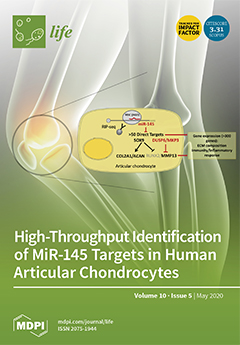During the early stages of pregnancy, the uterine endometrium undergoes dramatic morphologic and functional changes accompanied with dynamic variation in gene expression. Pregnancy-stage specific differentially expressed gene (DEG)-transcript-probes were investigated and identified by comparing endometrium transcriptome at 9th day (9D), 12th day (12D) and 16th day (16D) of early pregnancy in Polish large-white (PLW) gilts. Endometrium comparisons between 9D-vs-12D, 9D-vs-16D and 12D-vs-16D of early pregnancy identified 6049, 374 and 6034 highly significant DEG-transcript-probes (
p < 0.001; >2 FC). GO term enrichment analysis identified commonly shared upregulated endometrial DEG-transcript-probes (
p < 0.001; >2 FC), that were regulating the gene functions of anatomic structure development and transport (
TG), DNA-binding and
methyltransferase activity (
ZBTB2), ion-binding and
kinase activity (
CKM), cell proliferation and apoptosis activity (
IL1B). Downregulated DEG-transcript-probes (
p < 0.001; >2 FC) were involved in regulating the gene functions of
phosphatase activity (
PTPN11), TC616413 gene-transcript and
Sus-scrofa LOC100525539. Moreover, blastn comparison of microarray-probes sequences against
sus-scrofa11 assembly identified commonly shared upregulated endometrial DEG-transcript-probes (E < 0.06; >2 FC), that were regulating the gene functions of reproduction and growth (
SELENOP), cytoskeleton organization and
kinase activity (
CDC42BPA),
phosphatase activity (
MINPP1), enzyme-binding and cell-population proliferation (VAV3), cancer-susceptibility candidate gene (
CASC4), cytoskeletal protein-binding (
COBLL1), ion-binding, enzyme regulator activity (
ACAP2) Downregulated endometrial DEG-transcript-probes (E < 0.06; >2FC) were involved in regulating the gene functions of signal-transduction (
TMEM33), catabolic and metabolic processes (
KLHL15). Microarray validation experiment on selected candidate genes showed complementarity to significant endometrial DEG-transcript-probes responsible for the regulation of immune response (
IL1B, S100A11), lipid metabolism (
FABP3, PPARG), cell-adhesion (
ITGAV),
angiogenesis (
IL1B), intercellular transmission (
NMB), cell-adhesion (
OPN) and response to stimuli (
RBP4) was confirmed by RT-PCR. This study provides a clue that identified pregnancy-stage specific microarray transcript probes could be considered as candidate genes for recognition and establishment of early pregnancy in the pig.
Full article






